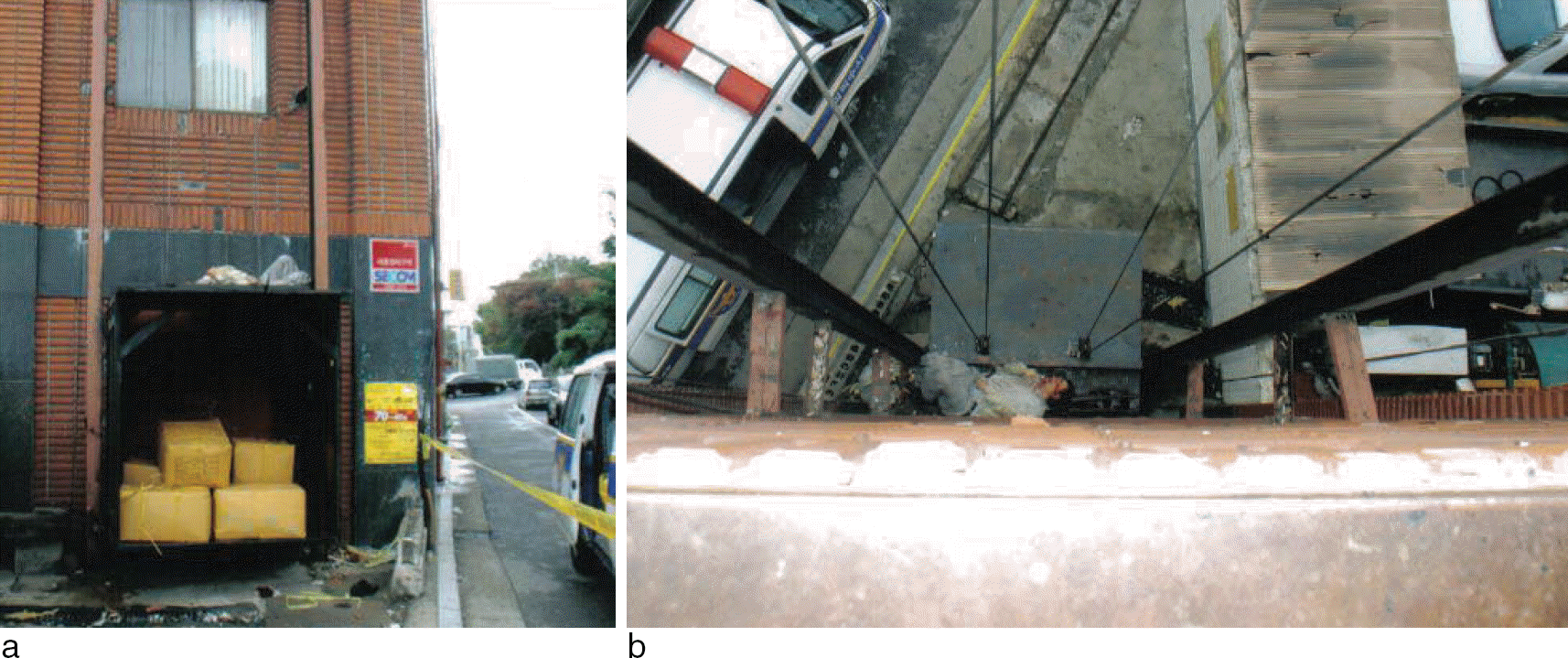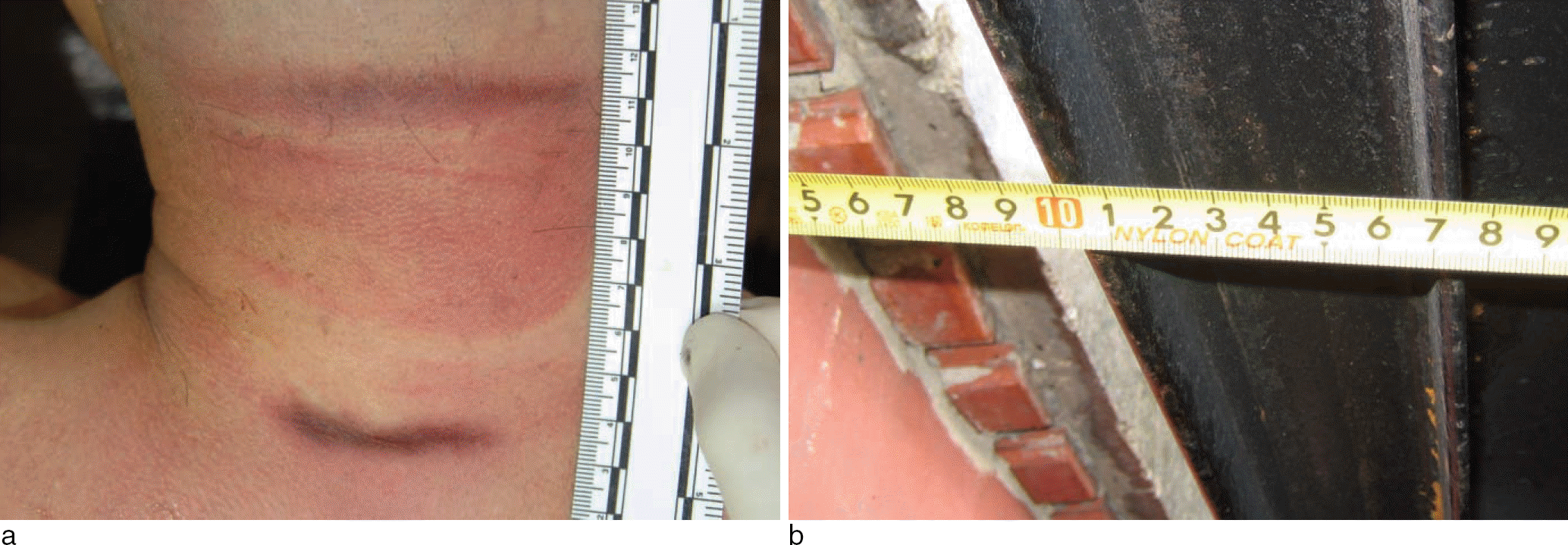Abstract
There has been an increase in the incidence of elevator-related accidents in the Republic of Korea. Every year, approximately 10~20 elevator-related fatalities are reported in the Republic of Korea. According to research from the United States, ‘falls’ were the most common cause of death, followed by ‘caught in/between’. In such investigations, it is important to distinguish between the manners of death. Herein, we report an elevator-related fatality, which required careful forensic investigation to determine the cause of death. A thorough forensic autopsy and reinvestigation of the death scene by medical examiners were required to determine if the death was caused as a result of the deceased falling from from a height or being caught in between the elevator and the wall of building.
Go to : 
REFERENCES
1. McCann M, Zaleski N. Deaths and injuries involving elevators and escalators. Georgia: Silver Spring;2006. p. 1–2.
2. Lee JC. Risk factors and improvement of elevator. Seoul: Korea Elevator Safety Technology Institute;2007. p. 1–5.
3. Korea Elevator Safety Institute. Accident statistics, Seoul (2013). Available at. http://kesi.or.kr.
4. Li L, Smialek JE. The investigation of fatal falls and jumps from heights in Maryland (1987-1992). Am J Forensic Med Pathol. 1994; 15:295–9.
5. Gupta SM, Chandra J, Dogra TD. Blunt force lesions related to the heights of a fall. Am J Forensic Med Pathol. 1982; 3:35–43.
8. Beale JP, Wyatt JP, Beard D, et al. A five year study of high falls in Edinburgh. Injury. 2000; 31:503–8.

9. Turk EE, Tsokos M. Pathologic features of fatal falls from height. Am J Forensic Med Pathol. 2004; 25:194–9.
Go to : 
 | Fig. 1.The freight elevator system is facilitated on the outside of the factory building. The elevator car is seen on the ground floor. The deceased is seen on the roof of the elevator car and several boxes of the goods are loaded inside of the elevator car which has no door with just iron bar frames structured in a cubic form (a). It is seen from the third floor window outside. The dead body is placed on the roof of the elevator car, near the building wall (b). |
 | Fig. 2.Flayed and crushed pattern of lacerations are developed on the orofacial area (a). A black silicon rubber fragment is seen in the mandibular fracture site (b). Linear abrasions from the chin to the clavicular area are formed parallel to the neck (c). And theses parallel marks are thought to match up with bricks on the building wall, also there are black silicon rubber materials (d). |




 PDF
PDF ePub
ePub Citation
Citation Print
Print



 XML Download
XML Download